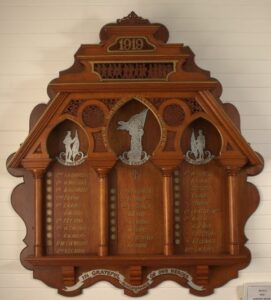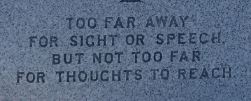
Coffs Collections is a virtual destination which facilitates access to some of the social and cultural heritage of Gumbaynggirr country.
The web service is marking its third birthday in the presence of a new merger which will be opened to the community this month – Yarrila Place, physical home to the city library, gallery and museum of the Coffs region.

Yarrila a Gumbayngirr word which means to illuminate, to enlighten. A goal worthy of sharing as broadly as possible.
During the year past, the Cultural Services team has continued to add both newly collected and newly digitised content to Coffs Collections. This is important for several reasons: because art exhibitions are, by nature, ephemeral; because less than 10% of any museum’s collection can be on display for the public at any time; and because previously hidden historical content may be uncovered unexpectedly. The more permanently constructed Public Art is not always accessible either, because it is best enjoyed during non-inclement weather.

While the exhibition spaces in Yarrila Place will feature some wonderful inclusions and exciting experiences, Coffs Collections provides a complementary spotlight. This year the team continued to add an unexpected breadth of content. Included were the musical score for an orchestral piece, commissioned in a competition to celebrate the 1961 centenary of the naming of Coffs Harbour;

an extraordinary seashell assemblage collated by a local conchologist; and collaborative artworks at Arrawarra Headland:

Since launch in September 2020, Coffs Collections has also attracted a new moniker – “mini Trove”. That’s an appellation to accept with some pride. Trove, launched in 2009 with a combination of the nation’s digitised newspapers and records from hundreds of gallery, library, archive and museum catalogues around Australia, is acknowledged as the leading record of Australian social history. It is a tool heavily used by social researchers, genealogists, scientists, artists and, of course, library practitioners in their work. Part of that work is to solve mysteries.
Recently, the Guide to the Bucca Honour Board was digitised for Coffs Collections but the details of one World War I soldier were missing. Listed on the Honour Roll is A. P. Miane, he seemed to be AWOL from all the usual sources.

This Board is a fittingly ornate memorial to those who made sacrifices on our behalf. Many boards were given due press coverage when unveiled and the Bucca Honour Board was no exception. On 11 June 1919, a photograph of the Board appeared in the Sydney Mail. It shows one A. P. Milne in the right-most column.

But the Honour Board now residing in the Museum’s collection shows the name A. P. Miane inscribed in the centre column with a cross above and beside it.

Alexander Milne died on 5 June 1919, in Canada, and notification appeared in the Coffs Harbour Advocate on 19 June 1919.
Modifications had been applied to the Board after its unveiling, perhaps a little too quickly. Trove proved to be the most expeditious way to establish that.
Coffs Collections was developed with one-sixteenth of the budget available to the Australian Digitised Newspapers Project on which Trove was based, so it is fitting that there is a close partnership between the two services to take advantage of the scaffolding offered by Trove. Rather than having to use precious community-funded resources to host heritage newspapers, Trove provides access to some of our local digitised newspapers and journals instead, easily found via links from Coffs Collections.
As such Coffs Collections and Trove are complementary, but in reality, the development of Coffs Collections was inspired by Trove. In particular, the latter would not have been possible without the two National Library business analysts who defined the pathways for Australians to find and learn more about their heritage, writ large in all of its forms.
We lost them recently. They were Joanna Meakins (March 1980 – November 2022) and Judith Pearce (December 1952 – August 2023). Their intelligence, ability to inspire and indefatigable approach to resolving technological conundrums are irreplaceable. In particular, Judith’s vision for a library catalogue which looked like no other came to fruition as Trove.
This sentiment was placed on the gravestone of Private Alexander Milne, and is appropriate still. An unexpected but apposite linking.

